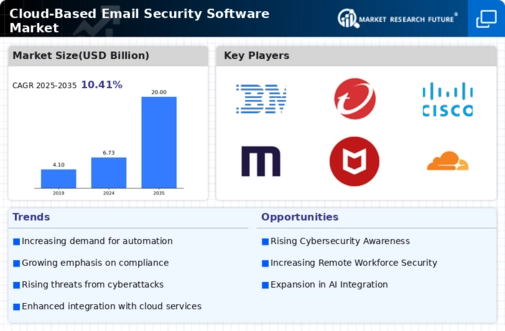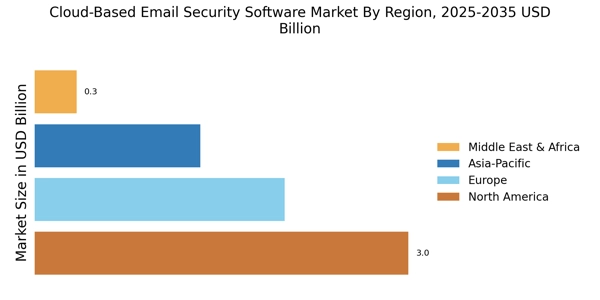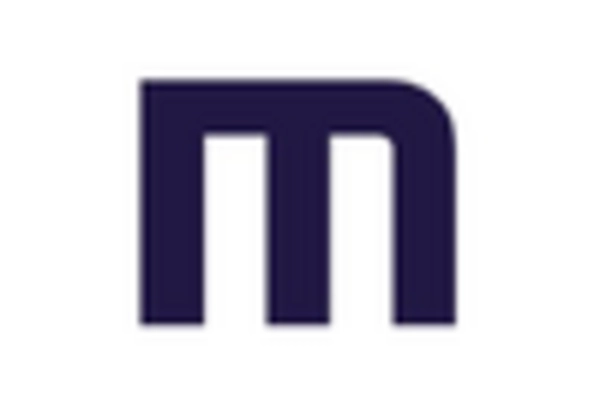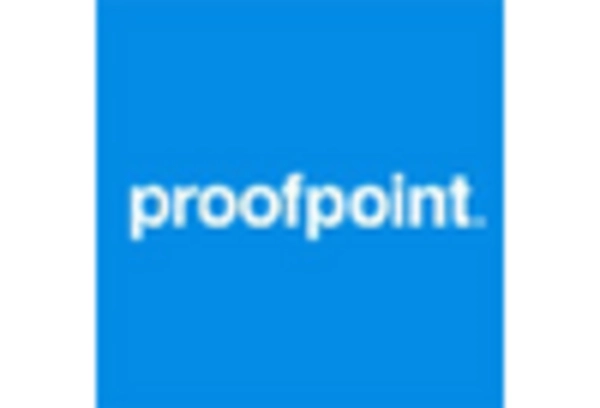Rising Cybersecurity Threats
The Cloud-Based Email Security Software Market is experiencing heightened demand due to the increasing frequency and sophistication of cyber threats. Organizations are facing a surge in phishing attacks, ransomware, and other malicious activities targeting email communications. According to recent data, nearly 90% of cyberattacks begin with email, underscoring the critical need for robust email security solutions. As businesses recognize the potential financial and reputational damage from data breaches, investment in cloud-based email security software becomes imperative. This trend is likely to continue as cybercriminals evolve their tactics, prompting organizations to seek advanced security measures that can adapt to emerging threats. Consequently, the Cloud-Based Email Security Software Market is positioned for substantial growth as companies prioritize safeguarding their email infrastructures.
Increased Remote Work Culture
The shift towards remote work has significantly influenced the Cloud-Based Email Security Software Market. As organizations adopt flexible work arrangements, employees increasingly rely on email for communication, making it a prime target for cyber threats. This transition necessitates the implementation of comprehensive email security solutions that can protect sensitive information regardless of the user's location. Data indicates that remote work has led to a 30% increase in email usage, further amplifying the need for effective security measures. Companies are now more inclined to invest in cloud-based solutions that offer scalability and ease of management, ensuring that their email systems remain secure in a distributed work environment. This trend is expected to persist, driving growth in the Cloud-Based Email Security Software Market as businesses adapt to the evolving landscape of work.
Growing Awareness of Data Privacy
The Cloud-Based Email Security Software Market is witnessing growth driven by the increasing awareness of data privacy among consumers and organizations alike. As data breaches become more prevalent, stakeholders are demanding greater transparency and security in how their information is handled, particularly in email communications. This heightened awareness is prompting businesses to adopt cloud-based email security solutions that prioritize data protection and privacy. Research indicates that organizations that implement robust email security measures are more likely to build trust with their customers, leading to improved business relationships. As the focus on data privacy continues to intensify, the Cloud-Based Email Security Software Market is expected to expand, with companies seeking solutions that align with consumer expectations and regulatory standards.
Regulatory Compliance Requirements
The Cloud-Based Email Security Software Market is significantly influenced by the increasing emphasis on regulatory compliance. Organizations are mandated to adhere to various data protection regulations, such as GDPR and HIPAA, which necessitate stringent security measures for email communications. Non-compliance can result in hefty fines and legal repercussions, prompting businesses to invest in cloud-based email security solutions that ensure compliance with these regulations. Recent studies suggest that companies prioritizing compliance are more likely to adopt advanced email security technologies, thereby driving growth in the market. As regulatory frameworks continue to evolve, the demand for solutions that can provide comprehensive compliance features is expected to rise, further propelling the Cloud-Based Email Security Software Market.
Integration of Advanced Technologies
The integration of advanced technologies, such as artificial intelligence and machine learning, is transforming the Cloud-Based Email Security Software Market. These technologies enhance the ability of email security solutions to detect and respond to threats in real-time, significantly improving overall security posture. AI-driven systems can analyze vast amounts of data to identify patterns indicative of phishing or other malicious activities, allowing for proactive threat mitigation. As organizations increasingly recognize the value of these advanced capabilities, investment in cloud-based email security solutions is likely to grow. The market is projected to expand as businesses seek to leverage these technologies to enhance their email security frameworks, indicating a promising future for the Cloud-Based Email Security Software Market.


















Leave a Comment